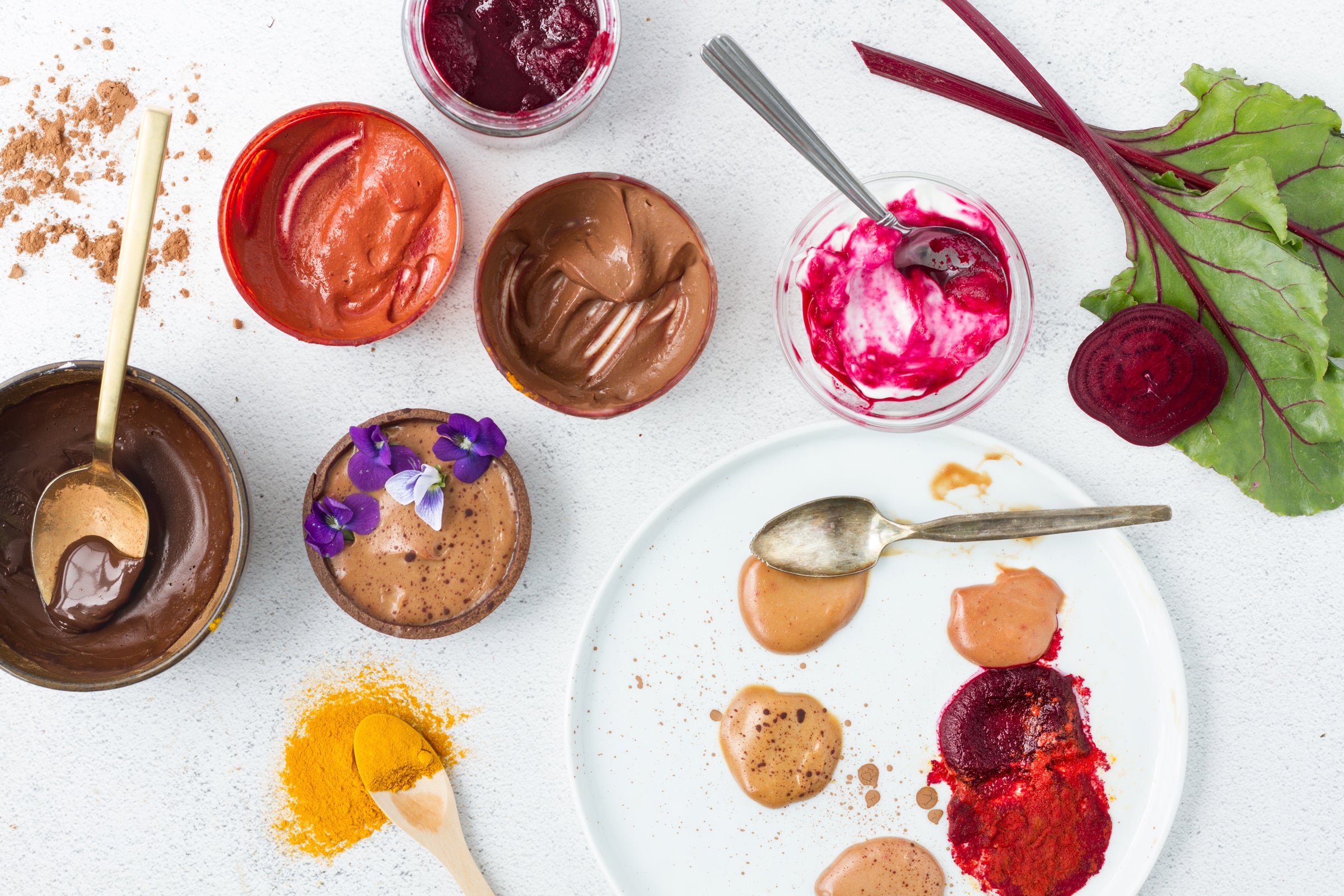How To Make Natural Food Dyes

For cooks who like to live their culinary lives in color, the question of food dye can be a concerning one. Should you roll with a flavorless synthetic dye and run the risks that come with adding chemicals to your food (looking at you, Blue 1, Red 40, and Yellow 5!) or take the leap and go the natural route?
Fret not, adventurous chef — whipping up homemade food coloring is not as daunting as it may seem. Not only are natural food dyes straightforward to make and just as vibrant as their artificial counterparts, but they also lend subtle flavors to your cooking and baking. This creates an opportunity to add depth to your dishes and explore your creative side.
Create the Colors of the Rainbow
Until 1856, anyone looking to add color to their crafts had to rely on natural sources for their dyes. That included everything from roots, bark, berries, and flowers to insects and shellfish. You could reliably dye almost anything, whether that was leatherwork, textiles, or food.
Using common, locally available materials to create DIY dyes has been the human prerogative since Neolithic times. Spanning cultures and centuries, innovative artisans have been experimenting with myriad substances and processes to yield both brilliant and dull hues. One of the most common sources was (and still is) plants. Think saffron, dandelions, and sunflowers for striking yellows or walnut husks and fennel for rich browns.
Dyestuffs that produced vibrant, permanent colors were considered prized luxuries reserved only for the wealthiest. To this day, one particular shade of purple is still associated with royalty. Known as Tyrian purple, this dye could only be obtained from a small mollusk native to the ancient Mediterranean trading city of Tyre. It took over 9,000 mollusks to make just one gram of the stuff, so naturally, it was outrageously expensive.
Good Enough To Eat
These days you don't have to sacrifice thousands of innocent invertebrates to get potent natural food coloring. Most sources are not only familiar and easy to obtain, but they're much more palatable. You can play with turmeric for yellow, cocoa for brown, matcha for green, and red cabbage for blue. You can also combine colors to create new hues and tinker with flavor profiles — the sky is the limit.
And for a deep, intense red, you can bet on beets. Beets provide a brilliant color perfect for an array of aesthetically-pleasing confections, from sumptuous red velvet cake and decadent chocolate chunk ice cream to vibrant Valentine's Day cookies. If that has your mouth watering, read on to learn how to whip up this quick and easy homemade food coloring.
How to Make Natural Red Food Coloring
 Ingredients
Ingredients
1 medium red beet
Scrub and clean the outer skin of the beet and reserve greens for another recipe. With skin, cut beet into 1/2” cubes. Put into large microwave mug or small bowl. Fill with water until the beets are just covered. Microwave for 3-4 minutes or until fork tender. Blend until a smooth puree.
